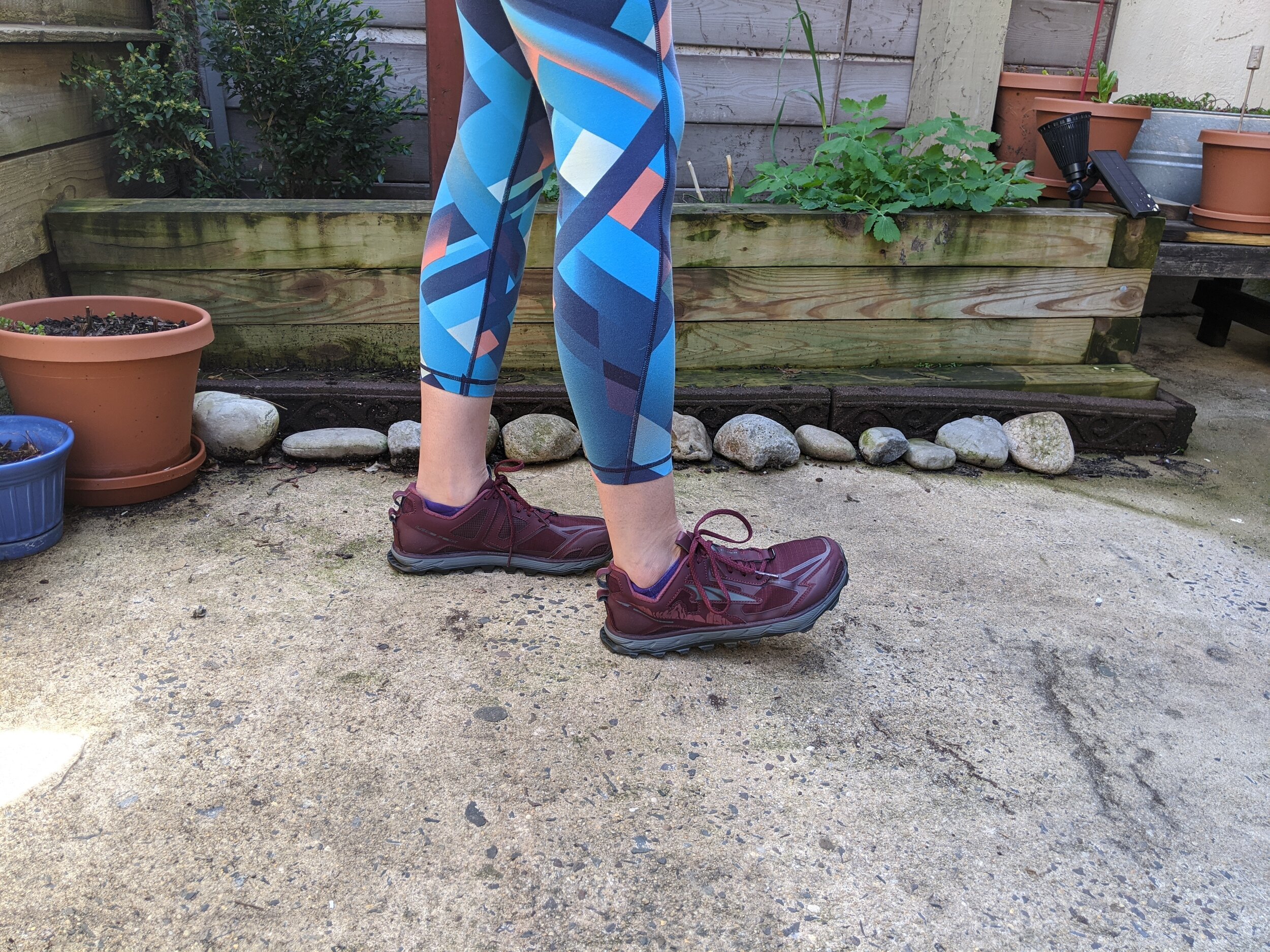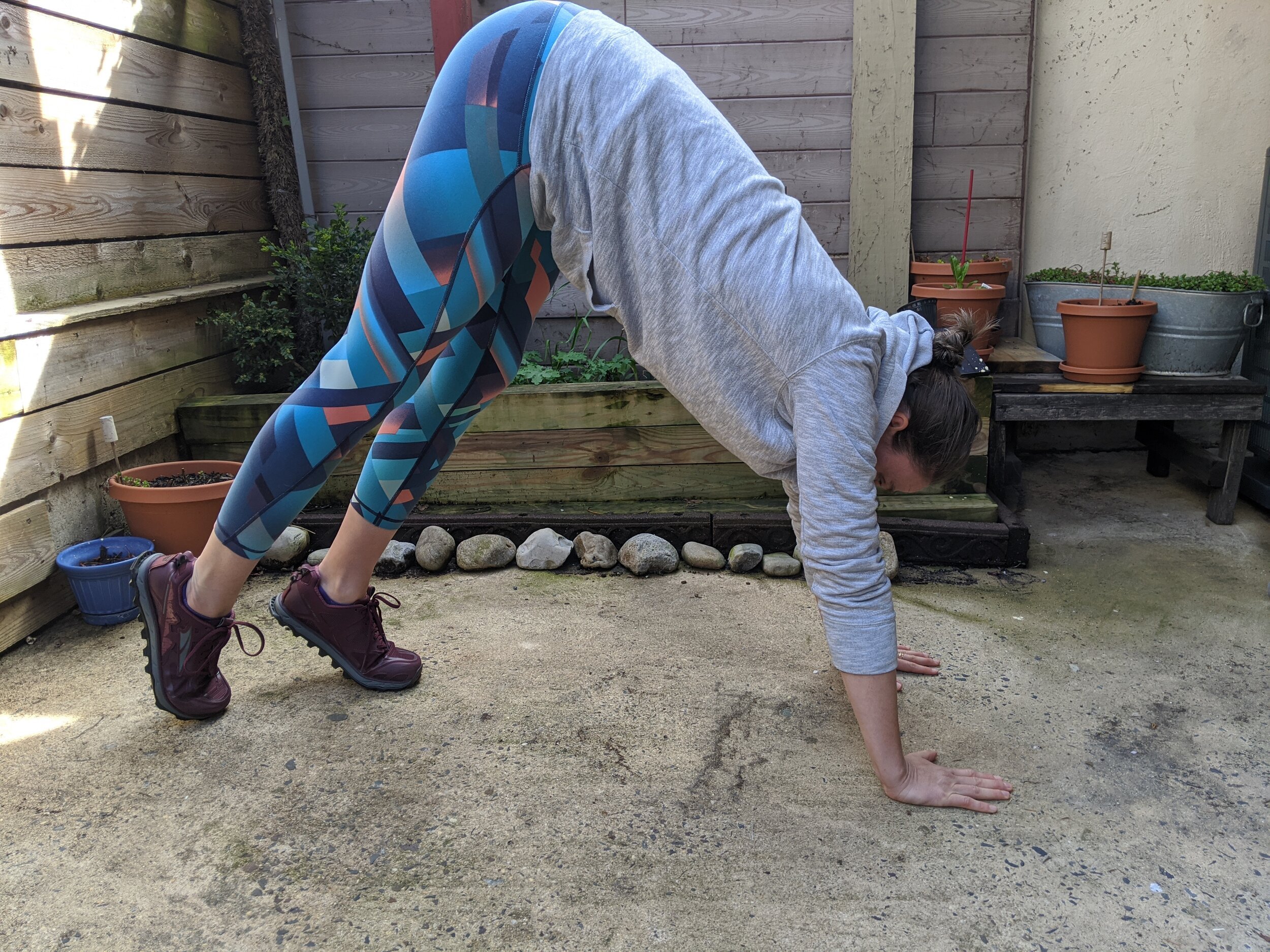Prevent Running Injuries with a Dynamic Warm Up
Begin your warm up with the basics. Just walk and mix it up with walking on your toes and heels in different directions.
How long should I warm up?
If you dedicate just 6-9 minutes of time for an active warm up before your run you are putting yourself in a position to decrease injury and improve performance.
What should my warm up look like?
It should be a series of dynamic movements that specifically focus on your weaker areas and performed with intention and focus to both how your body is feeling and how you are performing the movement. For example, if you have a history of a rolled ankle; make sure to do some ankle circles and get some fluid moving into those joints.
Why should I warm up?
Over and over again I hear runners say they don’t have time warm up. They barely have time to fit in the number of miles they need to log that day. To this I pose the question, “How is that working for you?” The statistics speak for themselves, runners are constantly getting injured and often run through the pain and injury. Which can quickly change gait patterns and lead to compensation habits that will cause more difficulty and frustration down the road.
Don’t overlook the upper body and core with inch worm progressions and an optional push up.
PRE-MADE WARM UP | CHECK OUT VIDEOS ON MY INSTAGRAM
Heel & toe walks | Walk on your heels then your toes pointed forward then inward and finally outward to warm up the lower leg.
Walking lunges | Moving with control and balance engage your quads, hamstrings and glutes as you lunge in a forward walk.
Side squats | Side stepping first into a wide squat with knees tracking over second tow and then stepping into a narrow hip width squat.
Inchworm with push up | Hands meeting the ground walk them slowly out to a high plank, lower into a push up, then walk your feet to your hands before standing completely up and repeating the process.
High knees | Bringing your quads parallel to the ground, keeping your ankle dorsiflexed and attempting to keep your torso strong but have limited movement.
Butt/glute kicks | Working your heels towards your glutes as you cycle through your gait with again a dorsiflexed foot.
Fast leg/jogging turnover drill | Jogging 3 slow steps then quickly moving one leg through a full cycle of gait, jog 3 steps perform on the other leg.
A skip | Finding a high knee coupled with a small hop as you wake up your hip flexors moving forward in a controlled quick movement.
B skip | Building off of A skips now extend the lower leg from your knee as you reach the top of the skip where your quad is parallel to the ground. After extending the lower leg out pull through just as you did with a glute kick.
C skip | Using the same A skip base after a small hop bring your knee out to the side then pull it back center like closing a gate landing your foot just in front of where you took off from opening the hips dynamically.
Airplanes/dipping birds | Engaging hamstrings and glutes to stabilize one leg unilaterally and working on your balance and glute activation.
Strides up to 70% of your maximum effort | Start jogging and then stride into a faster pace, mindfully checking in with any areas of the body that feels tight or ignored so you can bring attention to that area before kicking off into your run for the day.
OR MIX IT UP & CREATE YOUR OWN A LA CARTE WARM UP:
Ankle Circles. Start with your feet and roll your ankles in circles or roll out the bottom of your foot with a ball.
Focus on your Breath. Think about waking up your nervous system with some breath work that compliments your movement.
Just walk. Seriously it can be that easy.
Walking quad stretch with a calf raise or jogging butt kicks.
Walking knee to chest or jogging high knees.
Walking figure 4 quarter squats.
Forward and backward walking or jogging gate hip openers.
Around the world stretch.
Lateral side bends with arms overhead.
Bird Dog.
Cat Cow.
Planks with knee to elbow tap variations.
Walking lunges with overhead reach or a twist.
Forward fold walking hamstring stretch.
Walking side lunges or squats.
Walking airplane.
Leg swings. Side to side or front to back.
Strides 30-70 yards working up to 70% of your maximum speed.
Walking lunges can be a great way to engage your leg muscles and get the body warm in a controlled way.
BIGGEST TAKE AWAY
Just start with something. It doesn’t have to be perfect or the most creative. A simple walk, a few push ups and some side bends will already put you ahead of the curb. Place an emphasis on intention and body awareness during the few minutes you are warming up. This can even begin with some deep breaths while tying your shoes.



